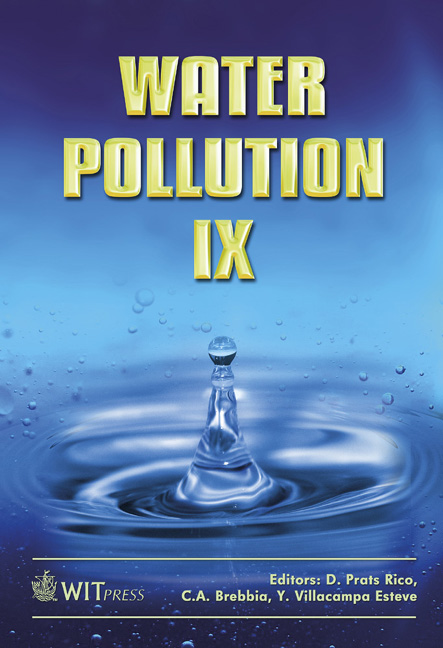Biological Ammonia Removal From Drinking Water In Fluidized Bed Reactors
Price
Free (open access)
Transaction
Volume
111
Pages
11
Page Range
453 - 463
Published
2008
Size
759 kb
Paper DOI
10.2495/WP080441
Copyright
WIT Press
Author(s)
M. Aboabboud, H. Ibrahim & A. Awad
Abstract
Ground water is the most reliable source of drinking water and frequently contains ammonia as a pollutant in concentrations up to 3mg/L. The recommended maximum concentration level (MCL) according to the World Health Organization (WHO) is 0.5 mg/L. Concentrations in excess of this in drinking water can be oxidized to toxic nitrite, support the growth of bacteria, (Nitrosomonas and Nitrobacter), and create taste and other problems in treatment plants and the distribution network. High ammonia concentrations also create high chlorine demand during disinfection that consequently produces trihalomethanes and organochlorines suspected to be carcinogenic. In this work the biological oxidation of ammonia to nitrite and consequently to nitrate by nitrifying bacteria, Nitrosomonas and Nitrobacter was studied in two fluidized bed reactors, each having one type of biofilm supporting material: sand and granular activated carbon (GAC). The aim was mainly to investigate the possibility of ammonia oxidation to nitrate when the ammonia concentration is low, and how the support materials influence the starting up period and the rate of ammonia oxidation capacity of the nitrification process. In this study the main equipment used were two reactors and an aerator, which were made of Plexiglas tubes. Synthetic water containing ammonia nitrogen (1-3 mg/L) was fed to the reactors in fluidization mode. Both GAC and sand reactors gave ammonianitrogen (NH4 +-N) oxidation capacity up to 2.5 kg/m3 of nitrogen per day. The type of the support material that was found to be successful in nitrification is GAC. Nitrification in the sand reactor proceeded at a very slow rate compared to the GAC reactor. The GAC reactor had a higher oxidation rate and steeper curve compared to the sand reactor and reached maximum nitrite production earlier than the sand reactor. Keywords: biological treatment, fluidization, biofilm, GAC, nitrosomonas, nitrobacter.
Keywords
biological treatment, fluidization, biofilm, GAC, nitrosomonas, nitrobacter.





